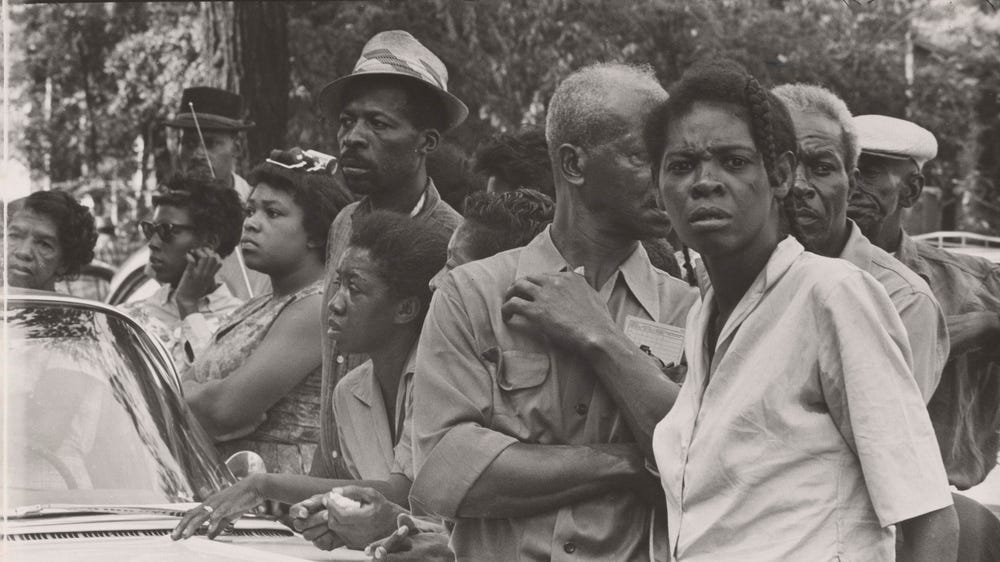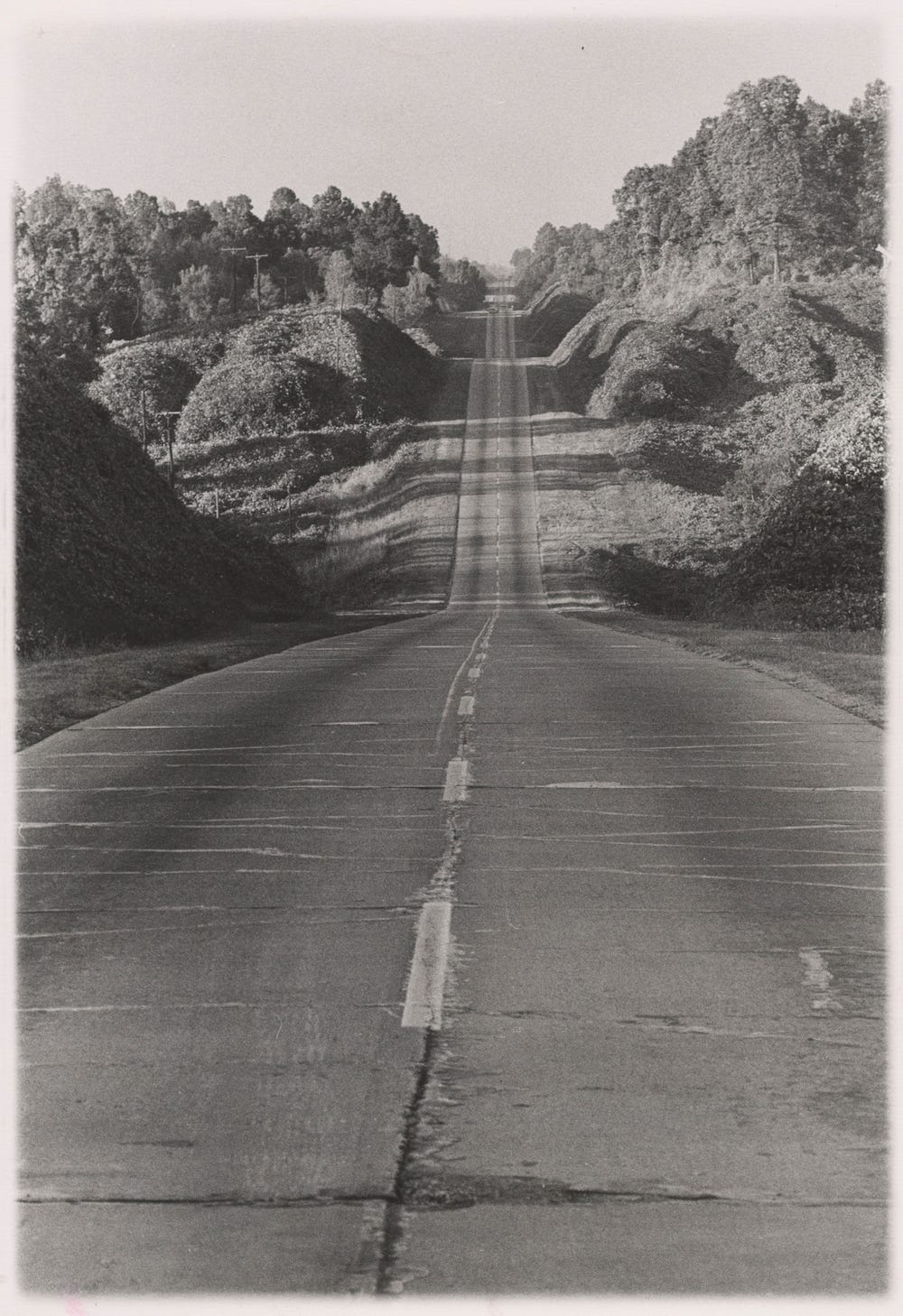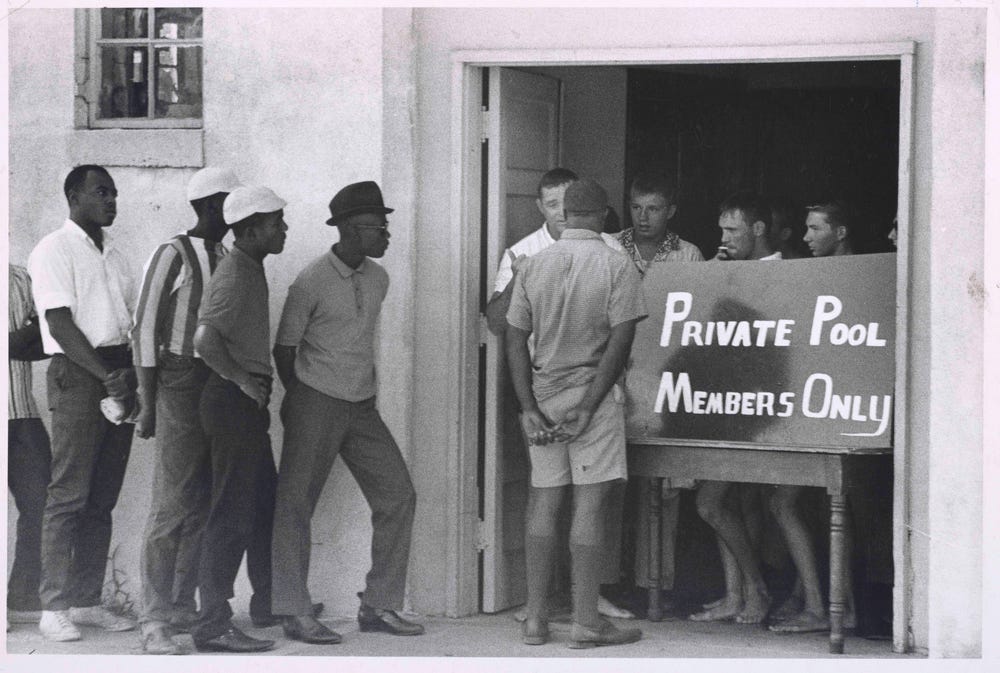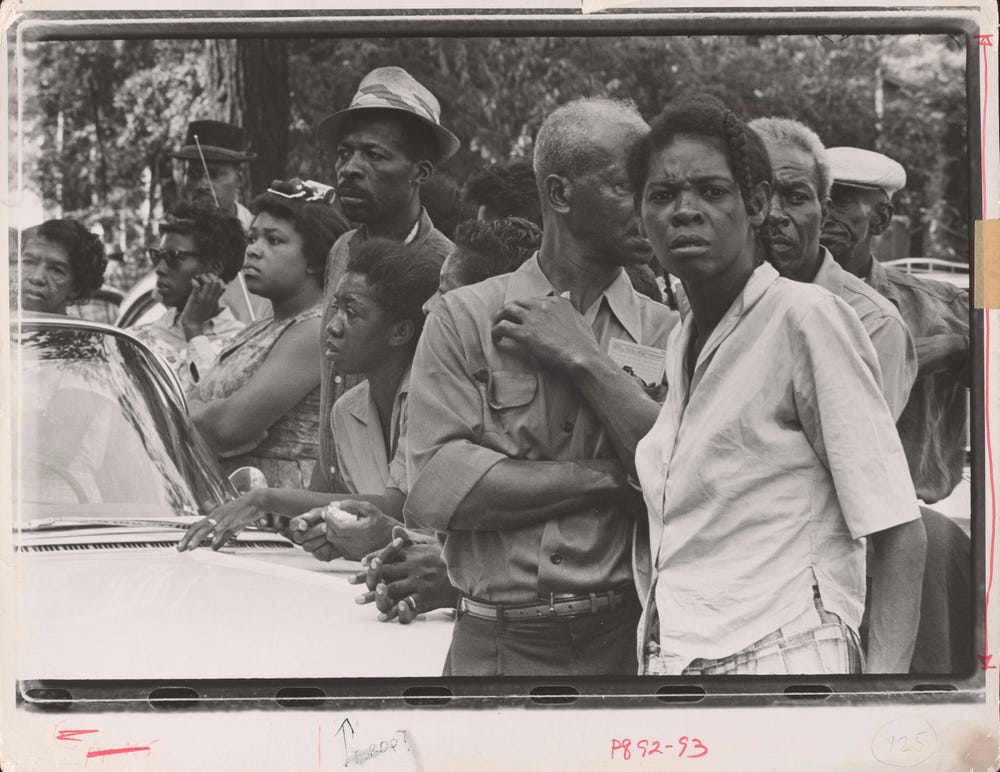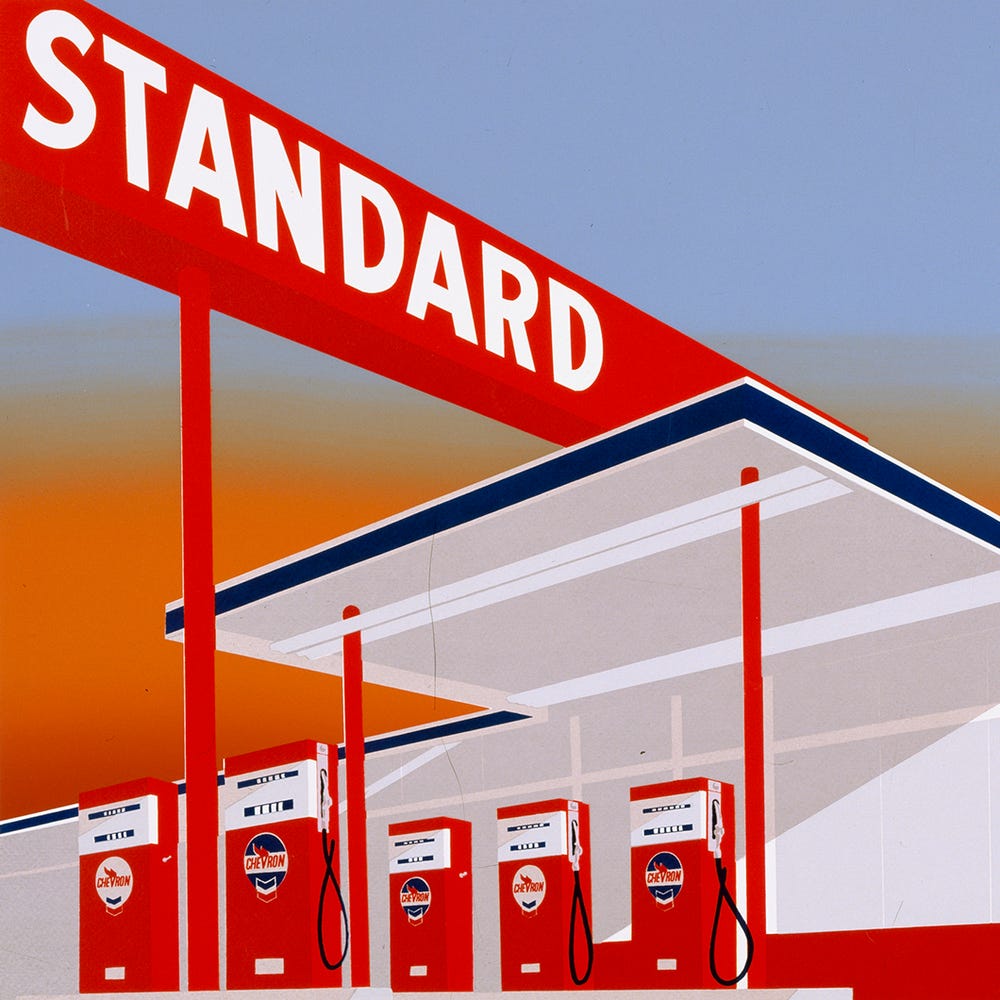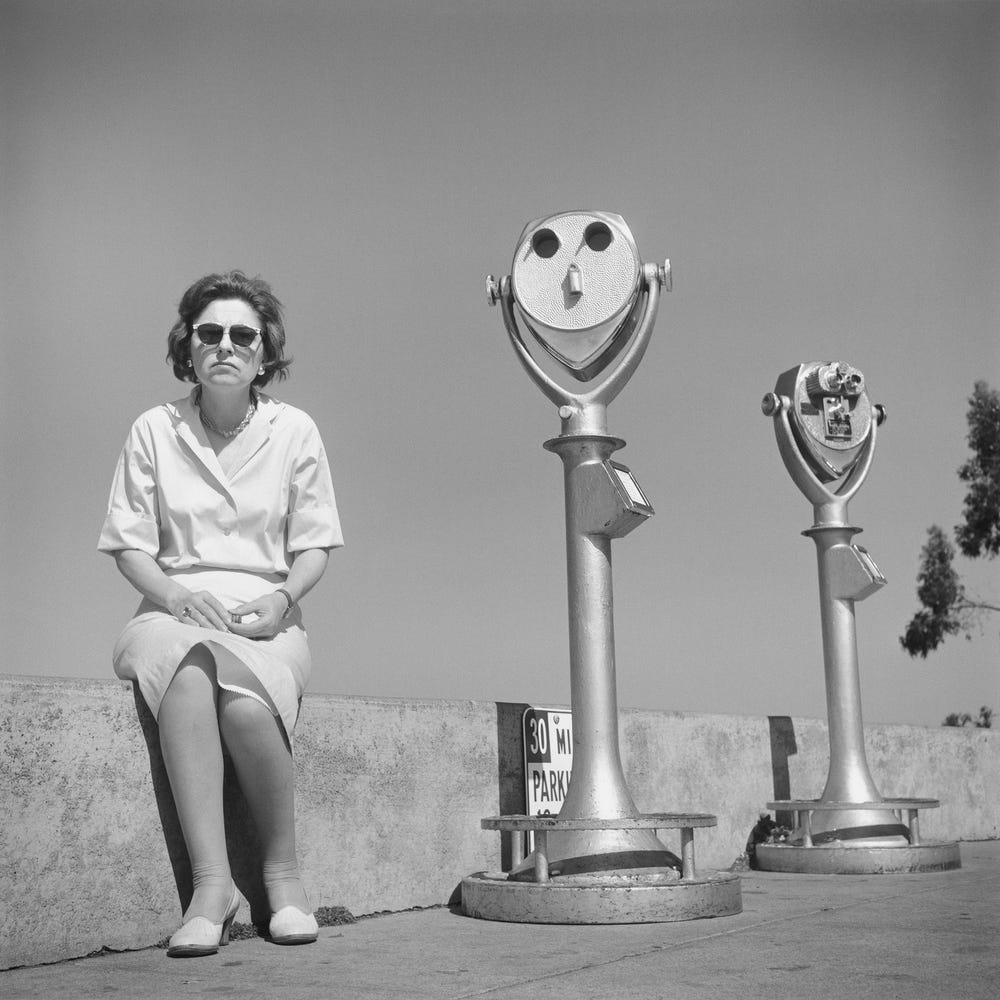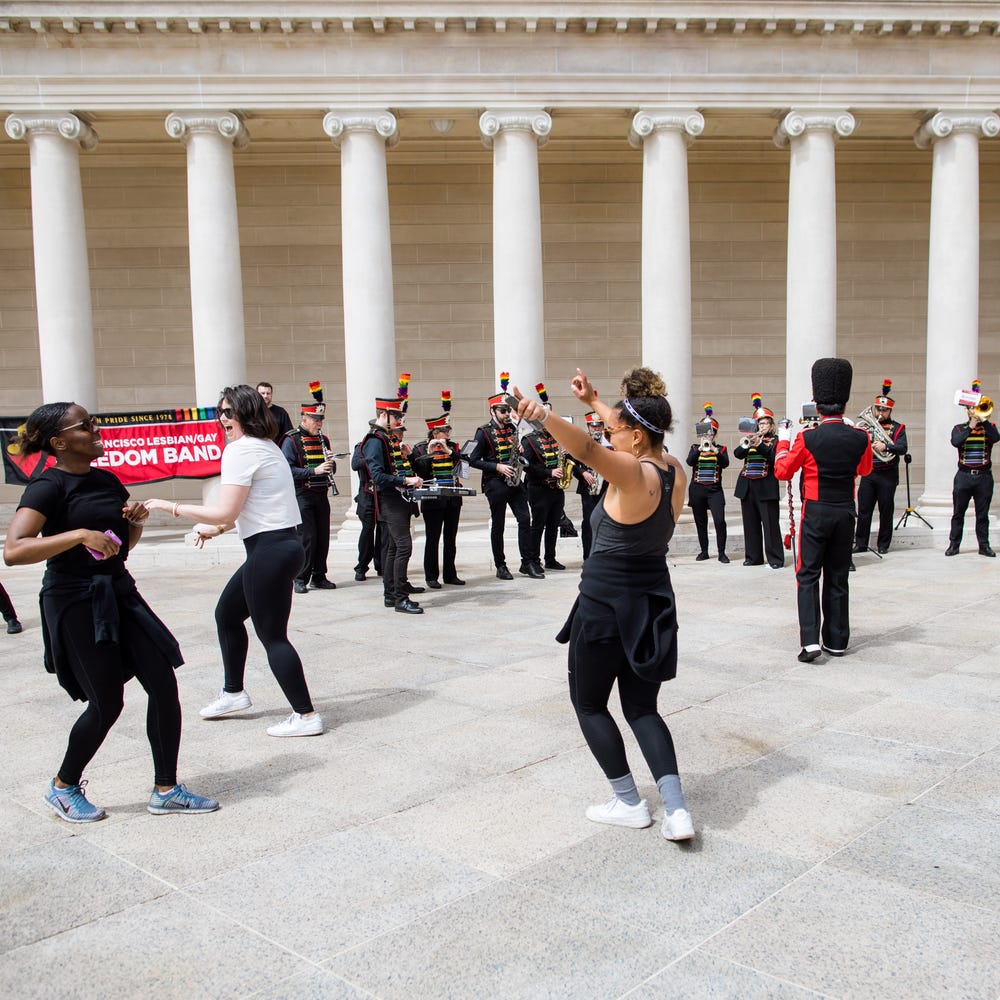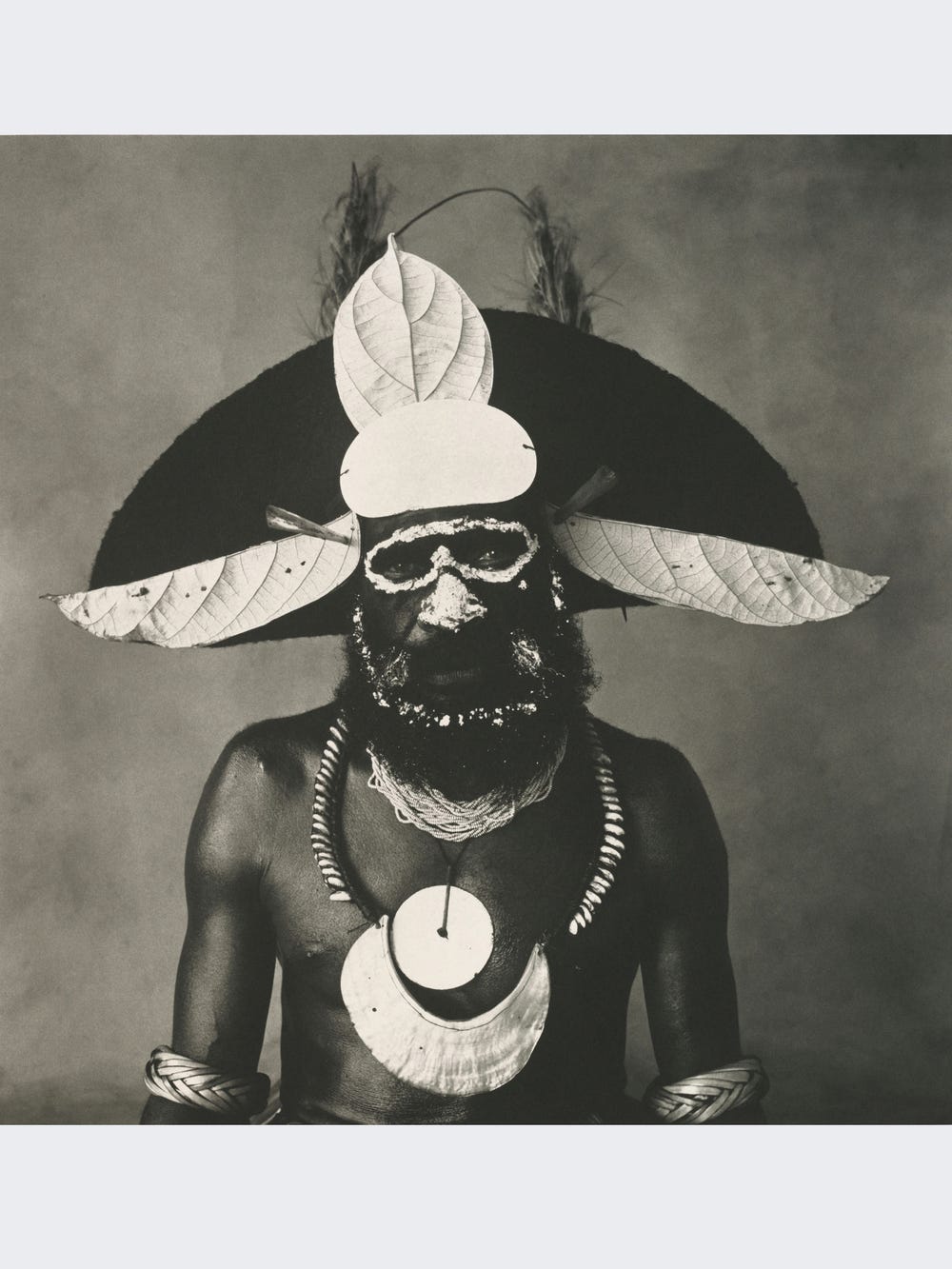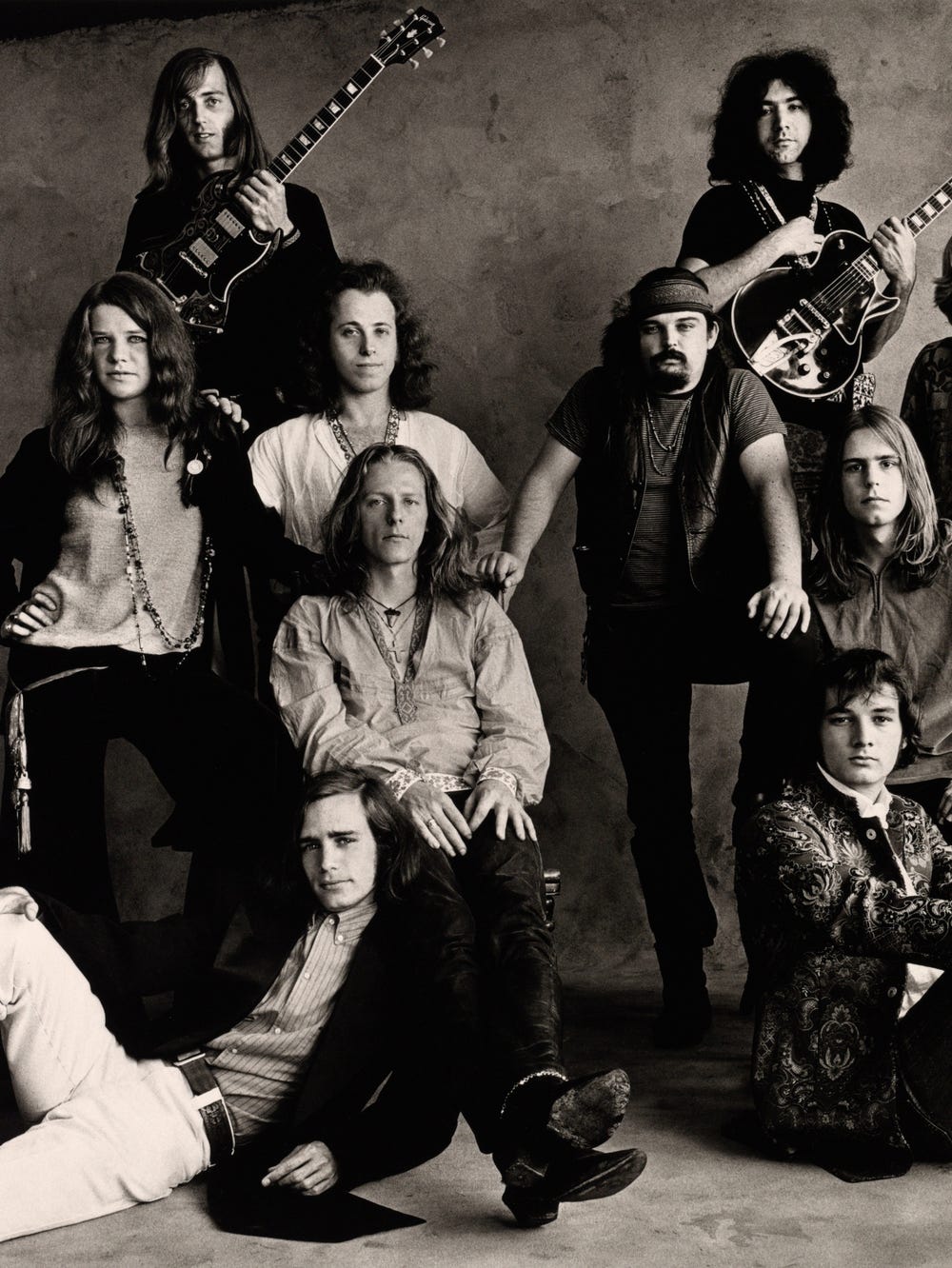What does resistance look like, as seen through a camera lens? Three civil rights movement veterans — Chude Allen, Bruce Hartford, and Ron Bridgeforth — meditated on advice they would give to activists today, prompted by photographs in the exhibition, Danny Lyon: Message to the Future. The following are some of their shared lessons about the process of fighting for social change.
Danny Lyon, The Road to Yazoo City, Mississippi, 1964. Gelatin silver print, Image: 25.1 × 17.1 cm (9 7/8 × 6 3/4 in.); sheet: 35.6 × 27.9 cm (14 × 11 in.), Collection of the artist
Chude Allen was drawn to a photograph of a road in Klan country, an ominous stretch of land buried deep in the thick Mississippi vegetation. As she spoke of this road, Bruce Hartford commented that “every time we drove that road we sang the whole way, because it was creepy, and it was going into one of the most dangerous areas of Mississippi.” Allen then reinforced how important companionship was during those challenging times.
“My story is not me going off and doing A, B and C, it’s of me going and being part of this group, and these people touching me, some of them staying with me all my life. If one begins to think that they’re out there alone, it’s time to take a break and take a deep breath and find connections with people,” Allen said. “Being a part of a movement is a thrill. The singing, and the sharing, being with people and working with them to make change – it’s a privilege and gift. The camaraderie is part of what keeps you going.”
The singing, and the sharing, being with people and working with them to make change – it’s a privilege and gift. The camaraderie is part of what keeps you going.
—Chude Allen
Danny Lyon, Demonstration at an “All-White” Swimming Pool, Cairo, Illinois, 1962. Gelatin silver print, Image: 16 × 24.1 cm (6 5/16 × 9 1/2 in.); sheet: 20.3 × 25.4 cm (8 × 10 in.), Richard and Ronay Menschel Collection
Hartford discussed a photograph of a protest at a swimming pool in Cairo, Illinois. The protest did not receive any attention in the news. He reflected on the lack of media coverage throughout the movement. “I guess that 90 percent of the freedom movement demonstrations that changed this country had no press coverage at all. Not a column inch, not a sound bite, not anything in the press. But they changed the country because they changed the people who were observing it, who were the targets of it, and above all they changed the people who participated in it.”
“If I were to give advice to 19 year old me, I’d start with, don’t be a damned know-it-all. Listen and respect others – advice I certainly could’ve used but probably not heeded. And then know that this is a long haul, this is a long struggle…You don’t have to solve everything on your own, and you won’t solve everything on your own, and it won’t be quick, and it will be long, and hard, and it’s a marathon,” Hartford said. “The last thing I would say to nineteen year old me is something Dr. King said, which is: ‘Nobody can do everything. But if everybody does something, then everything will get done.’ I wish I’d known that then.”
—Bruce HartfordYou don’t have to solve everything on your own, and you won’t solve everything on your own, and it won’t be quick, and it will be long, and hard, and it’s a marathon.
Danny Lyon, Crowds along the Funeral Route, Birmingham, Alabama, 1963. Gelatin silver print, Image: 24.9 × 34.5 cm (9 3/4 × 13 5/8 in.); sheet: 27.9 × 35.6 cm (11 × 14 in.), Collection of the artist
Ron Bridgeforth addressed his own truth of movement-building: that the energy from organizing should be channeled out of love, not anger. He also recognized how difficult that can be. While looking at a photograph from the funeral of four children murdered in a church bombing, Bridgeforth wondered aloud about Nietzche, fear, and control.
“‘He who fights with monsters should be careful, lest he thereby become a monster. And if thou gaze long into the abyss, the abyss will also gaze into thee.’ That impulse has been a part of my community all of my life. It took me a long time to understand that if you allow it, the thing we’ve experienced in this country will destroy us,” Bridgeforth said. “The only way we’ve survived is that we found love. The other part is called grace — that in spite of what we’ve endured, we must feel love in each other, love ourselves, I’m not saying love your enemies, but the impulse cannot be anger. That can’t carry us through. In fact, it will cause us to self destruct. That’s my own journey.”
“Value yourself, is what I tell [young activists] today. I did not. I would have thrown away my life, because I did not understand its value. I didn’t understand how many generations, not just people, but generations that were sacrificed so that I could live. I carry inside myself all these things, that people have prayed for, and worked for, and I needed to use it wisely.”
—Ron BridgeforthI didn’t understand how many generations, not just people, but generations that were sacrificed so that I could live. I carry inside myself all these things, that people have prayed for, and worked for, and I need to use it wisely.
